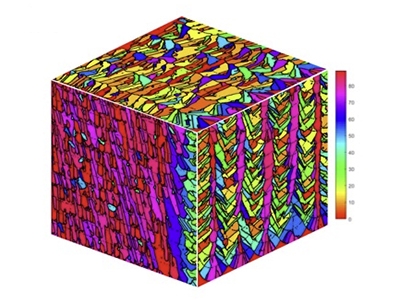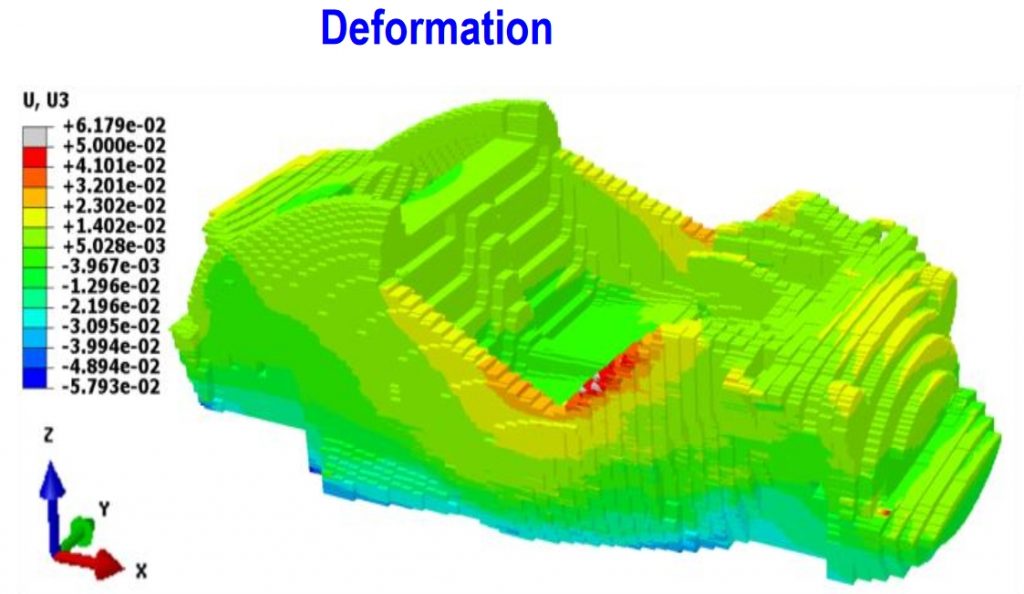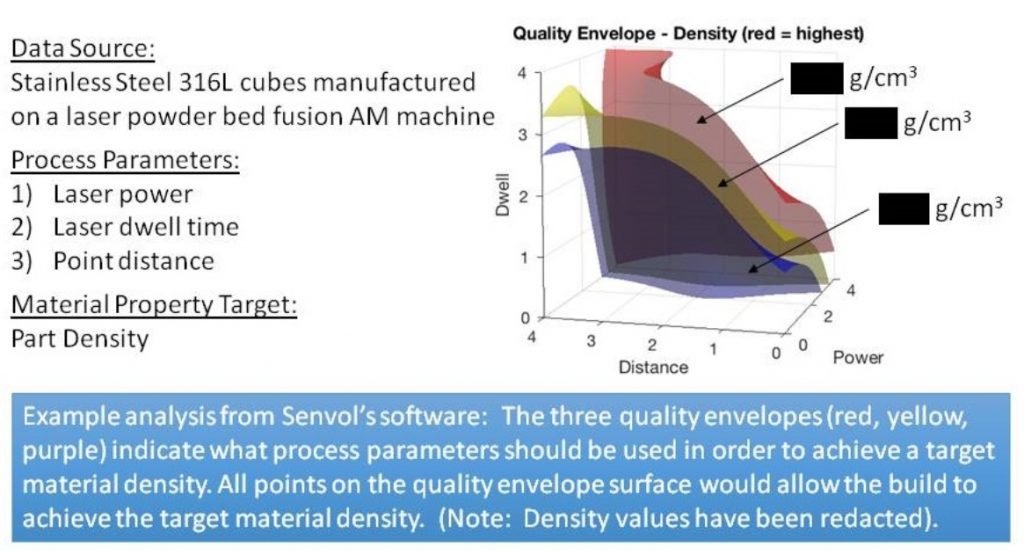The Conference on Advancing Analysis and Simulation in Engineering (CAASE) took place June 5th-7th with more than 500 industry professionals assembling in Cleveland for technical presentations, workshops, training courses, and an exhibit.
The event catered to the broader engineering simulation community with four key themes across physical and biological systems, simulation governance and democratization, business strategies and challenges, and additive manufacturing. The various technical sessions covered recent developments in design and simulation software while keynotes addressed the latest trends including artificial intelligence, blockchain, and Industry 4.0.
Recent developments in additive manufacturing part and process simulation software are summarized below alongside broader implications.
3D Printing Process Simulation
Simulating the additive manufacturing print process can reduce the number of attempts necessary to successfully produce a part that adheres to its design specifications.
Engineers from MSC Software discussed recent developments in simulating FFF and SLS thermoplastic 3D printing processes with its Digimat-AM software. The company has partnered with Stratasys as the printer OEM partner to predict part warpage and optimal print orientation for high performance thermoplastics including PEEK and ULTEM 9085.
For the SLS process, the talk highlighted recent simulation work to predict optimal print orientation in collaboration with Solvay and its Sinterline 40% glass bead-loaded PA-6 powders. For direct metal laser sintering (DMLS) simulation, a separate software called Simufact was used for its macroscale mechanical, thermal, and thermo-mechanically-based distortion compensation capabilities as exemplified in a case study on an automobile hood hinge. The mechanical prediction offered sufficiently accurate internal part stress predictions compared to the coupled simulation at a significantly reduced computational cost, making the coupled simulation most beneficial for material and microstructure property prediction.

ANSYS, another major software provider in additive process simulation, discussed DMLS melt pool monitoring at the scan vector level rather than layer-by-layer (equivalent to ten or more printed layers) to further optimize process parameters and minimize porosity in printed parts. Working with Renishaw, ANSYS engineers also discussed process simulation to predict distortion and predict blade crash severity during powder recoating.
Additionally, the scan vector-level process modeling was said to provide better predictions on grain size, orientation, dendritic structures, and initial dislocation density in printed parts but would not be available for another year in the broader Workbench platform. Stepping back to layer-by-layer level simulation, thermal-mechanical models were demonstrated with the conclusion that additive-specific material properties are necessary to accurately model the process.

Taking an experimental first approach towards process simulation, Alphastar presented on recent work supported by the U.S. Navy that uses in-situ process monitoring equipment for DMLS alongside the company’s Genoa 3DP Simulation software to develop closed feedback loop process control. Although still under development, the project may allow for adjustments to be made on a printed layer to layer basis given input parameters including laser power, local bed temperature, laser distance, heat affected zone, and melt pool characteristics. Separately, the company also discussed its materials modeling MCQ software for continuous fiber composites, chopped fiber composites, ceramics, metals, and nanomaterials that compliments its additive manufacturing process simulation capabilities, and has been instrumental to successful 3D prints on Oak Ridge National Laboratory’s Big Area Additive Manufacturing printer.

Generative Design Software for 3D Printed Parts
Generative design software approaches additive manufacturing from the part design perspective, a necessary beginning and ending to the predictions provided by process simulation software. The two companies presenting generative design software at the event were ParaMatters, discussing CogniCAD, and Autodesk, discussing Autodesk Generative Design. Both companies provided insights into specific topology optimization and lattice design capabilities for metal additively manufactured parts. ParaMatters described a unique multimaterial feature in its software, where aluminum and titanium alloys were allocated spatially within a topology optimized bracket for optimal strength and weight savings. Although no DMLS printer has such a multimaterial capability, the example demonstrates successful optimization across mechanical design and material constraints. Autodesk also focused on materials, comparing the mechanical properties from ever smaller diameter cross-sections of a 3D printed metal lattice against the limited manufacturer published data for larger diameter cross-sections. This physical characterization data was used to significantly improve the accuracy in a failure model for a complex lattice structured part relative to its tested failure points and modes. Autodesk showed how important accurate materials property data is for accurate modeling, and the lack thereof in additive manufacturing today.

Machine Learning Applications in 3D Printing
The latest analytical tool to support modeling and simulation in additive manufacturing is machine learning. Senvol, a New York City-based data analytics and software startup, discussed current efforts to apply machine learning in a pattern recognition capacity between process parameters, process data, material properties, and mechanical performance as part of a phase 2 STTR collaboration with the U.S. Navy. In collecting data sets across these four categories of sufficient quality, training data sets inform machine learning algorithms that support correlative models between the categories. Efforts include process parameter optimization on a DMLS printer carried out using test data from 75 stainless steel cubes printed under varying process conditions for laser dwell time, power, and point distance. Senvol has also looked at process parameters to predict part density, and part orientation’s effect on fatigue life. The ultimate goal is to support rapid qualification of parts, of changes made to a previously qualified printer, and for new printer qualification.

Takeaways from CAASE 2018
CAASE 2018 highlighted challenges in additive manufacturing part and process simulation, and the efforts from companies large and small to address them. Process simulation using thermal and mechanical approaches and in some cases with higher model resolution help minimize errors during printing, compensate for part distortion, optimize print orientation, and connect predicted results with physical results for validation and eventually the benefits of closed feedback loop process control. From generative design and machine learning approaches, the availability of accurate materials and process data are key for simulation to play a bigger role in reducing trial and error printing. As modeling and simulation software techniques continue to advance, the integration between part design, process simulation and in-situ monitoring will be necessary to holistically improve each print process, part qualification, and printer qualification.
For the more news about generative design and 3D printing, subscribe to the 3D Printing Industry newsletter, follow us on Twitter, and like us on Facebook.
Looking to get involved in a new project? Join the 3D Printing Jobs board.
Featured image shows Alphastar’s 3DP Simulation software deformation prediction for Big Area Additive Manufacturing (BAAM). Image via Alphastar.


